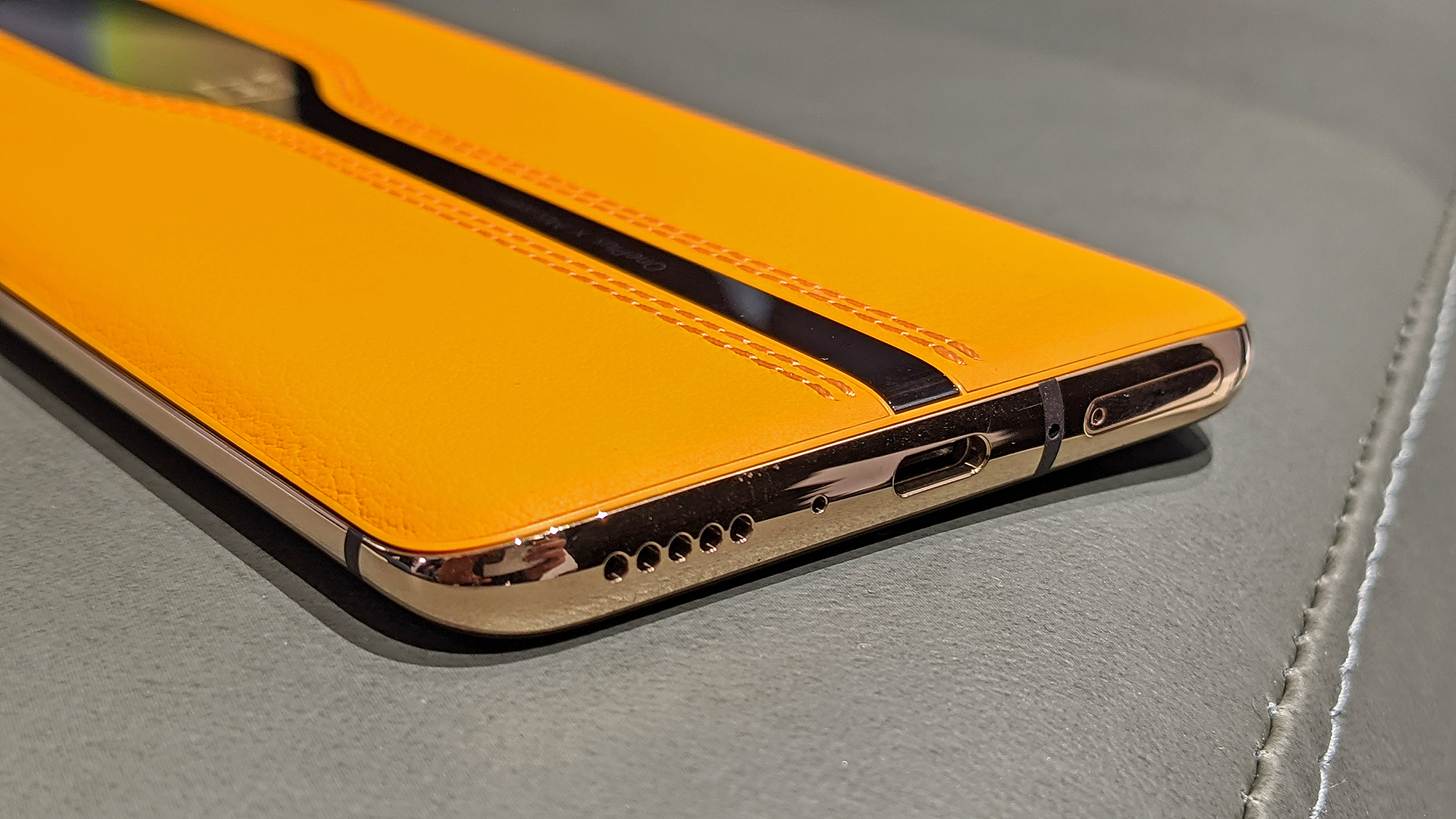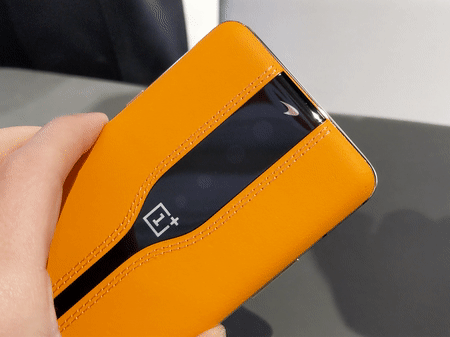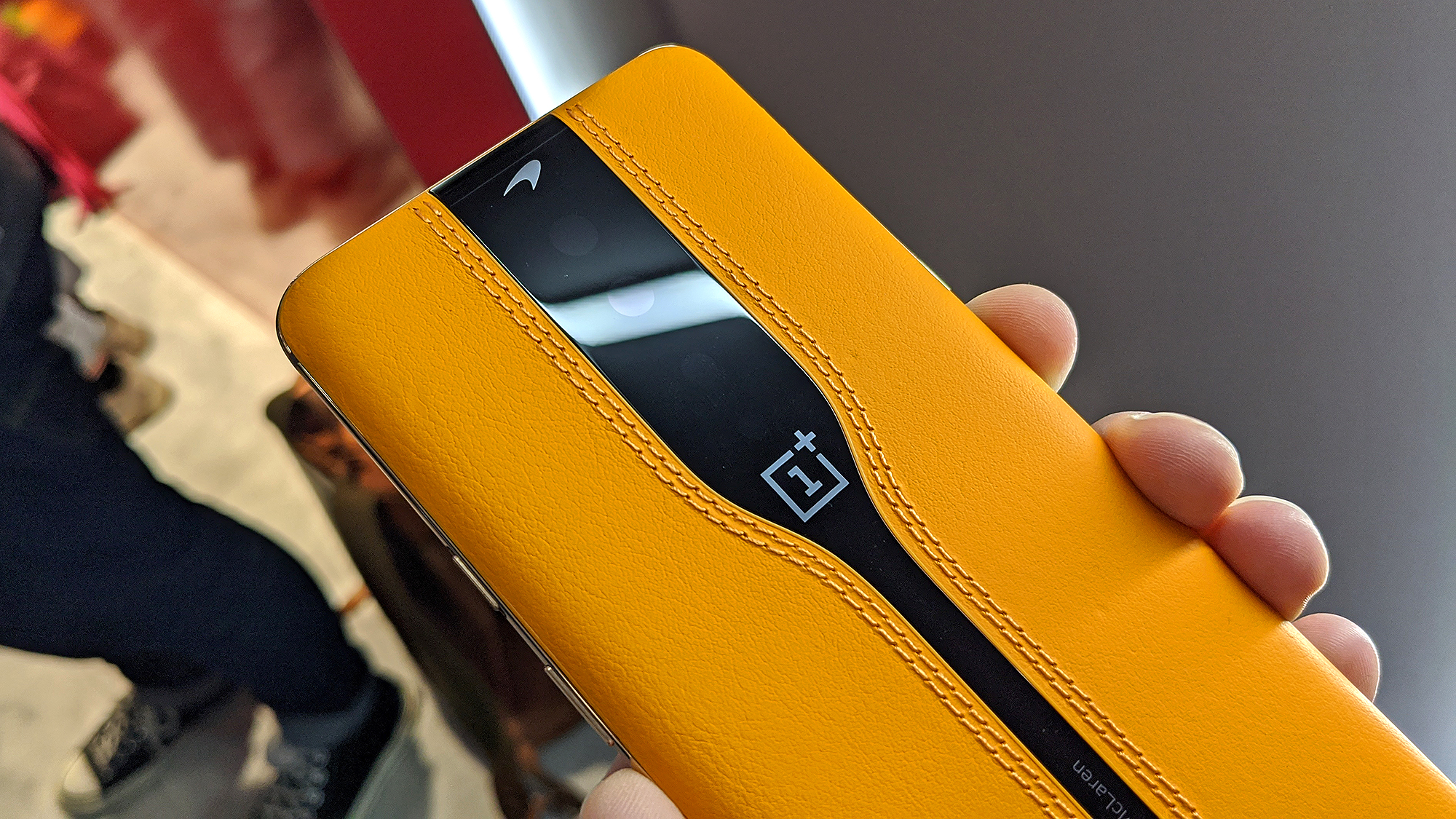OnePlus' Concept One is a smartphone from the future, and I want one now
Invisible camera lenses are just the start

Update: It would appear that OnePlus is now actually working on a foldable phone, at least going by a new patent. So that could be its next concept phone.
LAS VEGAS — The first time you witness the glass concealing the OnePlus Concept One's triple-lens rear camera go from almost opaque to transparent, it's a bit of a trip. Sure, it's a subtle effect, but most of us simply aren't used to seeing glass that acts in this way in our everyday lives.
But the purpose of that party trick — which utilizes something called electrochromic glass — isn't merely to look stealthy. When the glass goes dark, it can act as a neutral density filter, which is something that professional photographers use to darken photos, so they can experiment with aperture and shutter speed without overexposing and washing out their images.
Electrochromic glass is easily the OnePlus Concept One's defining characteristic, but it also perfectly encapsulates the still-young Chinese phone maker's approach to design. The motif is equal parts about aesthetics and purpose; form and function in lockstep, rather than one following the other.
OnePlus supplied a group of journalists with a small batch of Concept One phones behind closed doors at CES 2020. However, the company isn't committing to putting the device into production beyond the examples we had a short time to play around with. That's a shame, because I've fallen in love with it.

Unconventional materials, interesting design
Before we return to the glass, let's chat about the Concept One's overall design. To be frank, its proportions don't deviate much from those of the OnePlus 7T Pro. There's still a pop-up front-facing camera and a curved 90Hz Fluid AMOLED display looking back at you, so nothing's really changed from the front.
It's only when you peer at the back that you can see what makes the Concept One unique. First off, there's the Papaya Orange leather — McLaren's trademark hue — split by that central column of electrochromic glass. OnePlus tells us the leather is derived from the very same source as the leather that lines the seats inside the McLaren 720S, which is likely another indication the Concept One really isn't feasible for the mass market, at least in its current state.
Get instant access to breaking news, the hottest reviews, great deals and helpful tips.

As a car nerd myself, OnePlus' ongoing fondness for McLaren has always piqued my interest, though I don't think the union has produced a particularly good looking smartphone yet. The Concept One, though, is different. The fit, finish and color of the leather is exceptional, perfectly complimenting the gold chrome aluminum frame. Plus, the exquisite stitching is a very nice touch. Normally, I find leather gaudy on phones, but the Concept One strikes all the right notes for me.
Speaking of the frame, OnePlus is using a process called physical vapor deposition to give the Concept One's aluminum exoskeleton a brilliant luster. The PVD process uses intense pressure and heat to vaporize solid metal, then deposits the powder as an extremely thin film over a given surface. This process is said by some to be more durable than traditional electroplating, though OnePlus wasn't all that clear about the benefits of PVD and why it chose to use it on the Concept One. It does look pretty, though.

The future of glass
The glass is clearly what OnePlus is proudest of, however, and the challenge of implementing that electrochromic material was one the phone maker spent a considerable number of man hours trying to overcome. In fact, Xi Zeng, OnePlus' Creative Director, said it took 18 months to develop electrochromic glass thin enough for application in a smartphone, albeit thick enough to fully cloak the optics when opaque and maintain the proper durability.
And so the electrochromic glass on the back of the Concept One is just 0.35 millimeters thick — many times thinner than the electrochromic glass that makes up the dynamic sunroof in some McLaren automobiles. And while OnePlus didn't invent the material, it is the first to employ it on a phone.
If you're wondering how the glass is able to adjust translucency, it's all down to an invisible alloy called indium tin oxide. When applied to glass, indium tin oxide makes the surface conductive, and a passing electrical charge can modify the composition of the glass' molecules, allowing more or less light to pass through.
When OnePlus first began working with electrochromic glass, the material drew far too much power from the phone's battery and took an agonizing 5 seconds to change states. But in the Concept One, the power draw is "almost like nothing" according to Zeng, and the glass goes from dark to clear in just 0.7 seconds — which, incidentally, is the same amount of time OnePlus estimates it takes to launch the camera app.
To be fair, the lenses don't fully disappear. As you can likely see in some photos, the silhouette remains. However, even that's only noticeable when light strikes the glass just so, and in most conditions, from a normal distance, the cameras are imperceptible to the naked eye.
Expending all this effort to make cameras invisible does smack a little of over-engineering. Yet OnePlus hasn't gone these lengths only because it suspects people are repulsed by the number of lenses on the backs of their phones.
Zeng tacitly admitted the company is experimenting with electrochromic glass in other ways — like, for example, to make a phone that can actually change color. Imagine a handset transforming from fully black to red or blue in an instant, before your very eyes, all thanks to electrically-conductive glass.
"We are working now with materials that have dynamic properties," Zeng said during OnePlus' presentation to the media. "Properties we can control and tune however we like."

But when will we see it?
OnePlus was adamant that the electrochromic glass utilized in the Concept One is as durable as the glass used in its current smartphones, poses no threat to battery life, doesn't impede camera performance and adds only a negligible cost to the price of a phone, theoretically speaking.
So why doesn't it just release the Concept One already?
OnePlus might be treating the Concept One like an experimental prototype, but it sure doesn't feel like one.
Apparently, it's a matter of testing and refinement. OnePlus hasn't put these materials through enough trials to certify that they'll be as reliable as they would have to be for consumer use. In a way, it's sort of reminiscent of the company's attitude about IPXX water resistance ratings — no, we haven't gone through the song and dance to verify this, but on the other hand, take our word for it.
Still, it seems OnePlus could release a device like this to the masses if it really wanted to. And that's what's truly most striking about the Concept One.
As far as I could tell in my brief hands on, the Concept One is just as snappy as any OnePlus device in recent memory. The software behaves exactly the same, there aren't any glaring, deal-breaking glitches, and even some of the components — like the display and overall chassis design — look to be similar if not carried over from products OnePlus already manufacturers. The company never elaborated on what silicon powers the Concept One, but I wouldn't be surprised if it was lifted wholesale from the 7T Pro.
In other words, OnePlus might be treating the Concept One like an experimental prototype, but it sure doesn't feel like one. Rather, it feels final — like a fully-formed product. And I'd say that means it stands a pretty good chance of finding its way into your hands one day.
Be sure to check out our CES 2020 hub for the latest news and hands-on impressions out of Las Vegas.
Adam Ismail is a staff writer at Jalopnik and previously worked on Tom's Guide covering smartphones, car tech and gaming. His love for all things mobile began with the original Motorola Droid; since then he’s owned a variety of Android and iOS-powered handsets, refusing to stay loyal to one platform. His work has also appeared on Digital Trends and GTPlanet. When he’s not fiddling with the latest devices, he’s at an indie pop show, recording a podcast or playing Sega Dreamcast.
